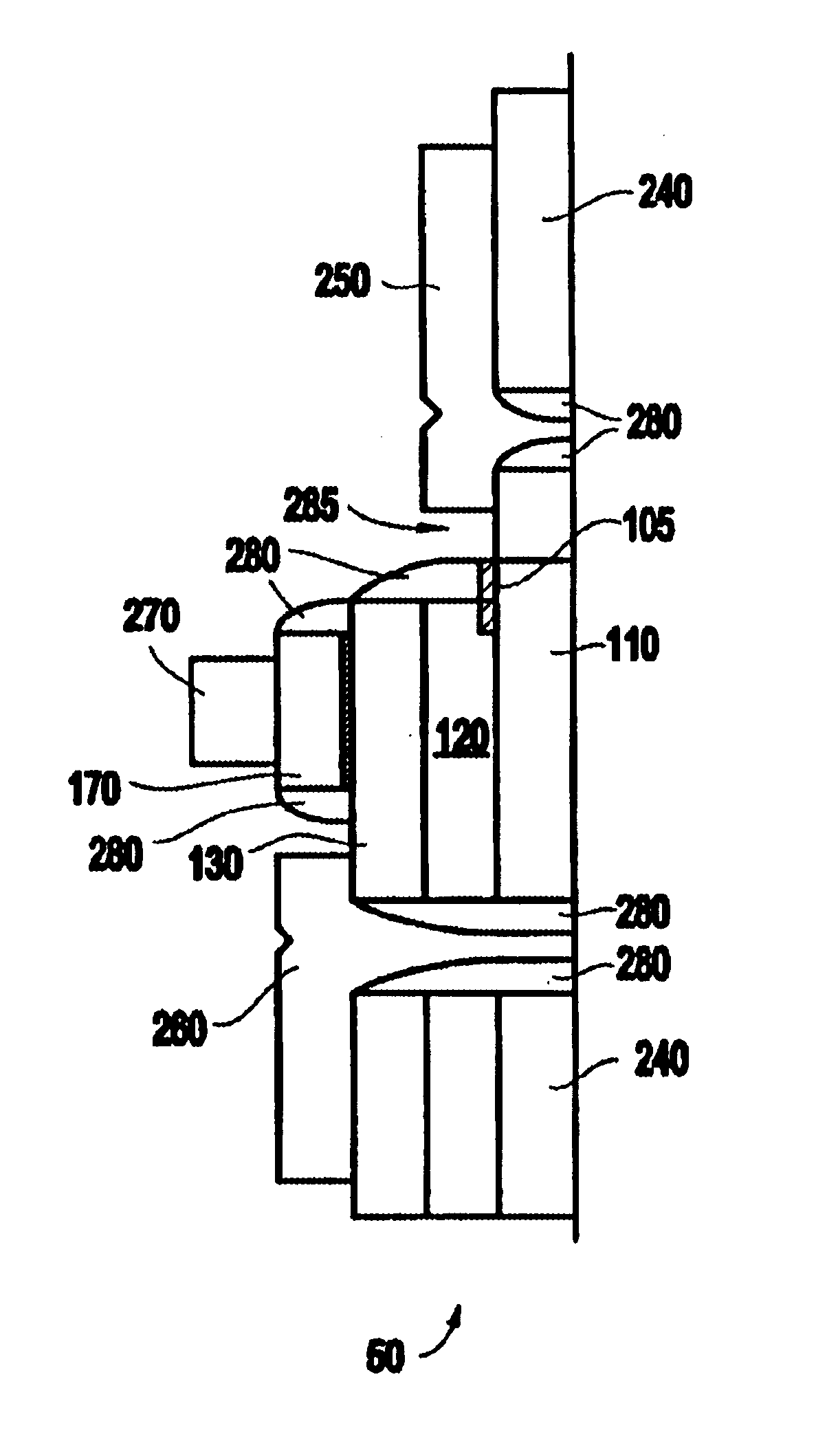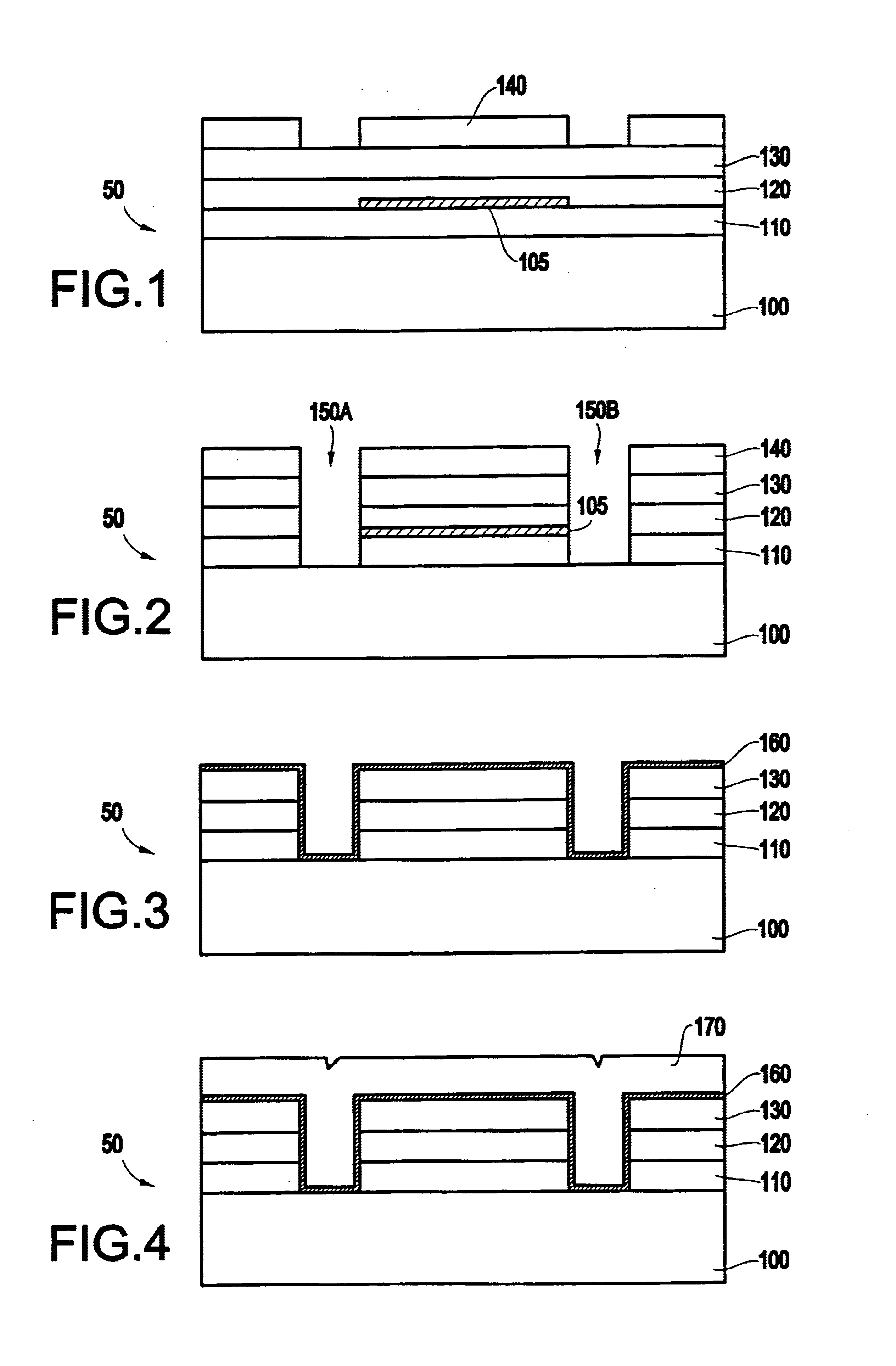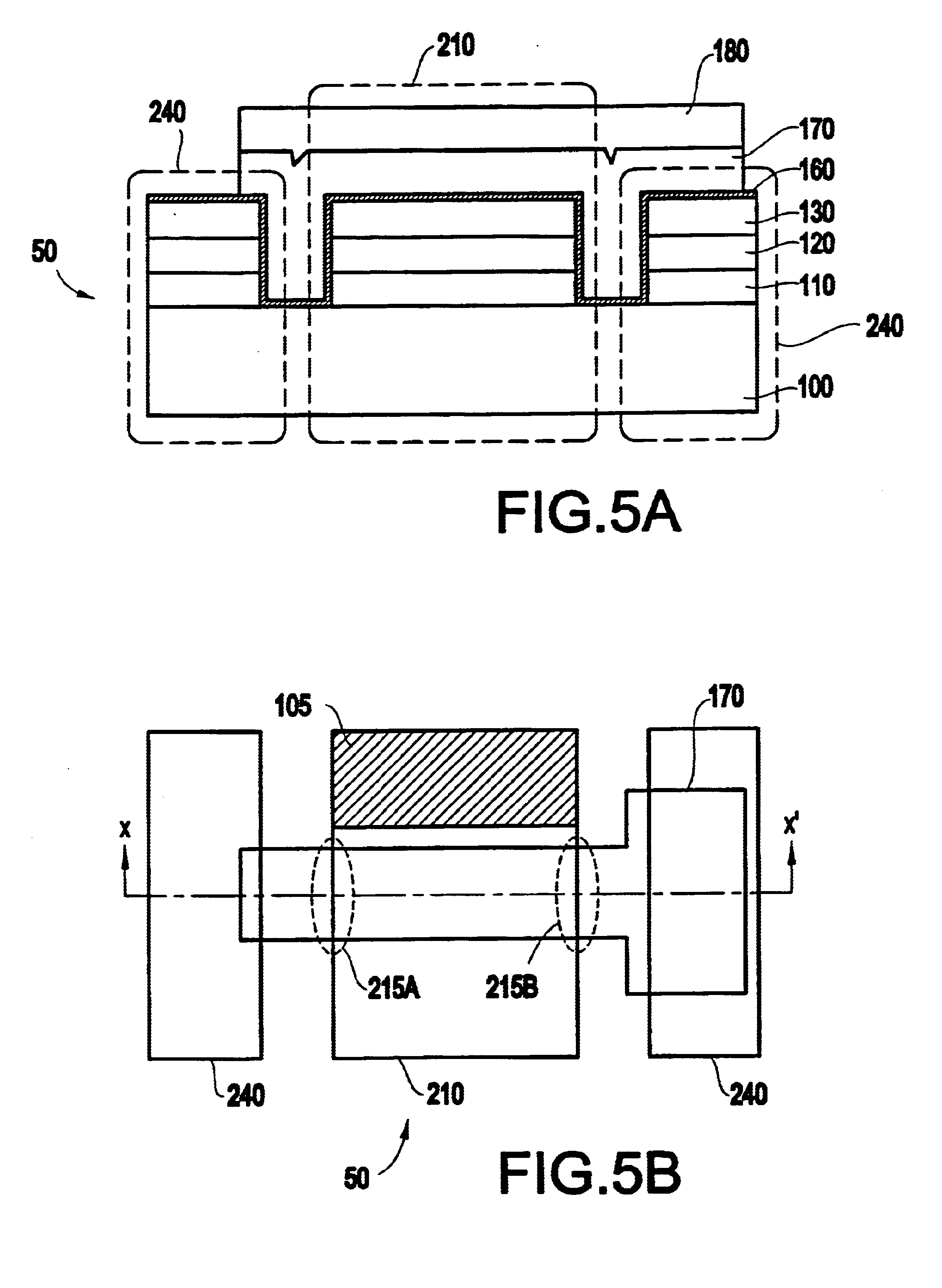Polymer thin-film transistor with contact etch stops
a thin-film transistor and contact etching technology, applied in the field of organic-based thin-film transistor devices, can solve the problems of comer thinning problem, expensive equipment and processing associated with silicon processing, and the inability to commercialize organic-based tfts
- Summary
- Abstract
- Description
- Claims
- Application Information
AI Technical Summary
Problems solved by technology
Method used
Image
Examples
Embodiment Construction
As previously mentioned, there is a need for an improved structure and method for a high performance vertical channel polymer thin film transistor device, which does not have the problems inherent with the conventional devices, such as the comer thinning problem due to topography, and avoids having the most sensitive portion of the body element exposed to process induced contamination. According to the present invention, a new and improved structure and method of a polymer thin film transistor is disclosed.
Referring now to the drawings, and more particularly to FIGS. 1 through 8, there are shown preferred embodiments of the method and structures according to the present invention. Specifically, FIG. 1 shows a partially completed thin film transistor device 50 comprising a first conductive polymer layer 110, an etch-stop layer 105, a semiconductive polymer layer 120, and a second conductive polymer layer 130 all deposited consecutively on a substrate 100. The etch-stop layer 105 is a...
PUM
 Login to View More
Login to View More Abstract
Description
Claims
Application Information
 Login to View More
Login to View More - R&D
- Intellectual Property
- Life Sciences
- Materials
- Tech Scout
- Unparalleled Data Quality
- Higher Quality Content
- 60% Fewer Hallucinations
Browse by: Latest US Patents, China's latest patents, Technical Efficacy Thesaurus, Application Domain, Technology Topic, Popular Technical Reports.
© 2025 PatSnap. All rights reserved.Legal|Privacy policy|Modern Slavery Act Transparency Statement|Sitemap|About US| Contact US: help@patsnap.com



